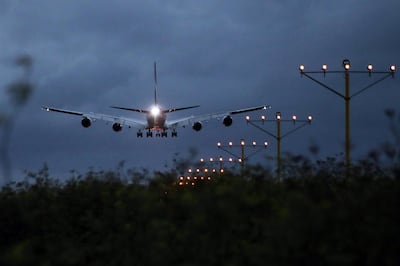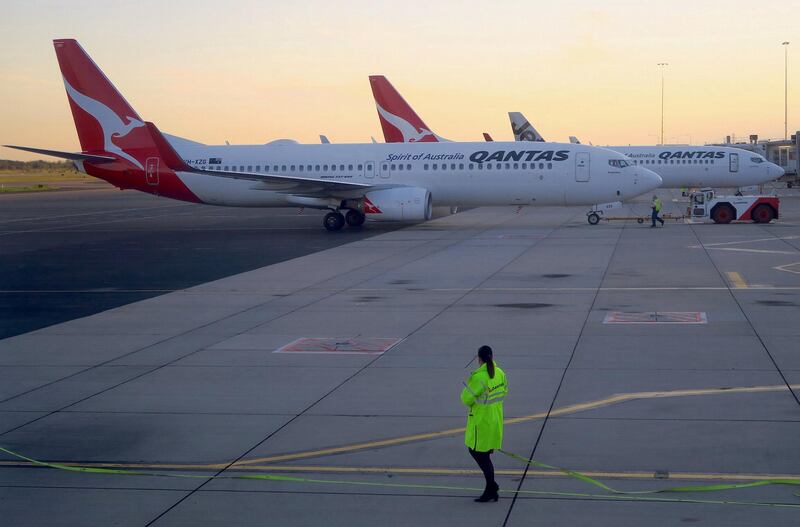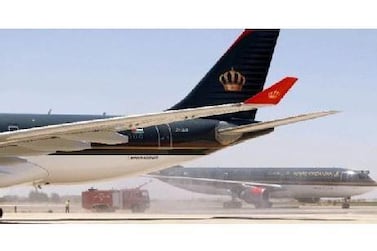For decades, travellers have endured jet lag as an unavoidable menace on long journeys.
Now, as airlines push for record-breaking, non-stop flights halfway around the planet, attempts to beat the debilitating symptoms are turning into a billion-dollar industry.
New insight into the physical and emotional toll of ultra-long haul travel should emerge this weekend when Qantas Airways flies direct from New York to Sydney.
No airline has ever completed that route without stopping. At nearly 20 hours, it’s set to be the world’s longest flight, leaving the US on Friday and landing in Australia in its Sunday morning.
This will be more than an endurance exercise. Scientists and medical researchers in the cabin will turn Qantas’s brand-new Boeing 787 Dreamliner into a high-altitude laboratory.
They will screen the brains of pilots for alertness and monitor the diet, sleep and activity of the few dozen passengers.
The focus on super-long flights is partly driven by development of lighter, more aerodynamic aircraft that can fly further.
Singapore Airlines resumed non-stop services to New York last year.
The physical burden on customers is putting a renewed focus on jet lag, and creating a market of products to ease the suffering.
They include melatonin tablets, Pfizer's anti-anxiety medication Xanax, and Propeaq light-emitting glasses that claim to get the body back on track.
The potential customer base is staggering. The International Air Transport Association expects about 4.6 billion people to take a flight in 2019, which will jump to 8.2 billion in 2037.
Demand for jet-lag therapies is growing at about 6 per cent a year and the industry will be worth $732 million in 2023, BIS Healthcare says.
The broader sleeping-disorder market, dominated by pills, is worth $1.5 billion and will grow to $1.7bn by 2023, GlobalData says.
It says that more than 80 drugs to treat disturbed sleep are in clinical development.
Jet lag typically strikes when a traveller quickly crosses three time zones or more, leaving the body’s internal clock running to the time at home.
The chief complaint after touching down is often overwhelming fatigue during the day or insomnia at night.
It can be worse heading east, because travelling in that direction reverses the normal day-and-night cycle.
Each of the billions of cells in the human body has its own clock, and vital processes including heart function, food absorption and metabolism are all disrupted when organs are out of step, said Carrie Partch, a biochemist at the University of California Santa Cruz who has studied the circadian rhythm for 20 years.
“Jet lag is more than just an inconvenience,” Ms Partch said. “It’s pretty devastating physiologically.
"If you’re a constant traveller you’ll probably put on more weight, you’ll probably have cardiovascular challenges and you may have some behavioural changes.”
While researchers understand how light enters the brain and adjusts the master clock, they are still learning.
As recently as 2017, scientists won a Nobel prize for discovering molecular mechanisms that control circadian rhythms.
Even if the core proteins of a rodent can be manipulated in a laboratory to speed up internal clock adjustment, a fast-acting pill to do the same for frequent flyers is a way off, Ms Partch said.

Scientists have found exercise and the right food can help to synchronise the body to a new time zone, although research has also repeatedly shown that sunlight is the most powerful tool.
A University of Boulder Colorado study in 2017 said body-clock adjustment could be rapidly achieved by exposure to natural light alone.
Friday’s flight from New York, and another from London this year, are key tests for Qantas as it prepares to start direct commercial services from those cities to Sydney as soon as 2022.
The airline calls it Project Sunrise. If successful, Qantas says other super-long, non-stop routes from Australia’s east coast to South America and Africa might follow.
Airbus and Boeing are vying to supply the carrier with long-range aircraft that can reach the destination with a full load and fuel to spare.
Qantas plans to make a decision to press ahead with these flights or ditch the idea by the end of 2019.
It is not just crossing time zones that causes jet lag. General fatigue, poor-quality sleep, and the dry and pressurised cabin air exacerbate symptoms, said Conrad Moreira, a medical director at the Travel Doctor-TMVC clinic in Sydney.
“I’ve seen people disoriented a week after a flight,” Mr Moreira said.
He prescribes a range of sleep-inducing drugs, particularly for anxious flyers, including Stilnox and Xanax.
Tablets containing melatonin, naturally produced in the body to promote sleep, can also help, Mr Moreira said.
There are already at least half a dozen flights lasting at least 17 hours. Qantas last year started direct services to London from Perth in Western Australia.
Qantas’s planned network of longer flights will be prey to rising fuel prices. And there is a growing movement urging travellers to fly less and cut carbon emissions.
The airline’s ambitious plan follows a three-year turnaround that brought record profits and sent stocks soaring fivefold in five years.
Addressing the health implications of ultra-long flights is critical for Qantas. It must gain permission from Australia’s civil aviation regulator for cabin crew to be on duty longer than 20 hours.
The airline also needs a new deal with pilots who will fly the extra-long routes on new aircraft.
Managing staff exhaustion is a problem for the entire industry. Iata’s latest fatigue-management manual says some cabin crew can spend almost 21 hours awake on the day of a long-haul flight, even when their duty is shorter than 10 hours.
Qantas’s ultra-long direct flights will be priced at the business traveller who can take advantage of extra hours at the destination, said Rico Merkert, professor at the University of Sydney’s business school.
“It could be a game changer if they get it right,” Mr Merkert said.







